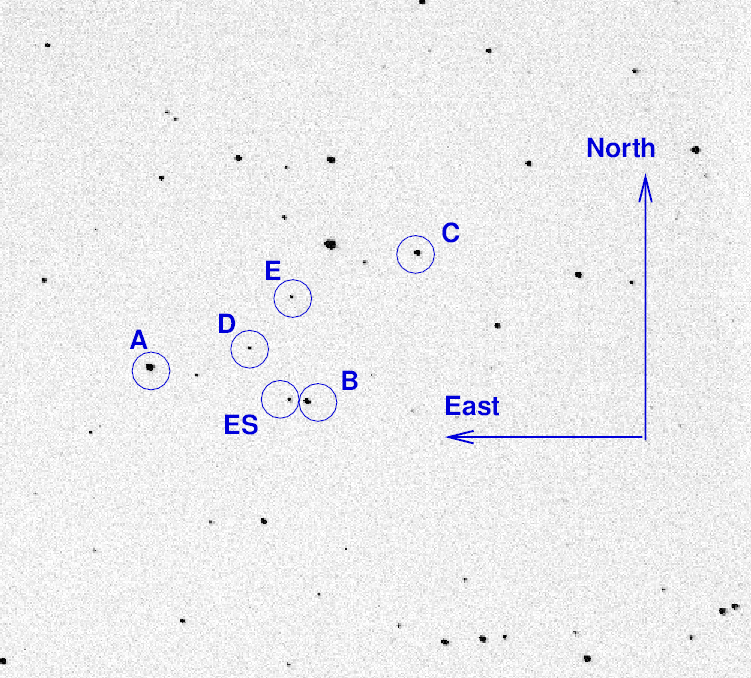
On the night of May 10/11, 2016, I acquired a set of observations of the cataclysmic variable star ES Dra. The variable star showed an average magnitude of about 15.0, faint enough that my measurements barely show its flickering light curve.
The main setup was:
This nova-like variable is currently in "standstill", and so a target of observations by the Center for Backyard Astrophysics.
The object is located at
RA = 15:25:31.86 Dec = +62:00:59
A chart of the field is shown below. The size of the chart is about 20-by-20 arcmin.

Entries for some of the marked comparison stars from the UCAC4 follow:
star UCAC4 B V ---------------------------------------------------- A 761-044722 11.723 11.227 B 761-044711 14.037 13.143 ----------------------------------------------------
I used 30-second exposures with no filter.
Conditions were good, though the waxing gibbous Moon was bright. Notice how the sky background decreases long after sunset, as the Moon was going down in the west.
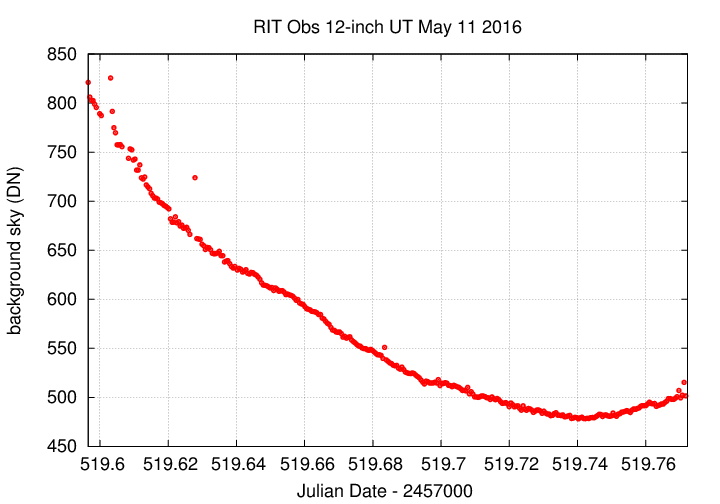
The lack of guider was less important on this night, since I could use a simple mechanism to nudge the telescope a bit when it drifted away from its starting location.
As before, I removed any measurements which were made more than 600 pixels (791 arcsec = 13.2 arcmin) from the center of the field.
Using aperture photometry with a radius of 5 pixels (radius of 6.7 arcsec), I measured the instrumental magnitudes of a number of reference stars and the target. Following the procedures outlined by Kent Honeycutt's article on inhomogeneous ensemble photometry, I used all stars available in each image to define a reference frame, and measured each star against this frame.
Sigma-vs-mag plots show that the floor was about 0.003 mag. ES Dra is the outlier at diff mag = 4.2.
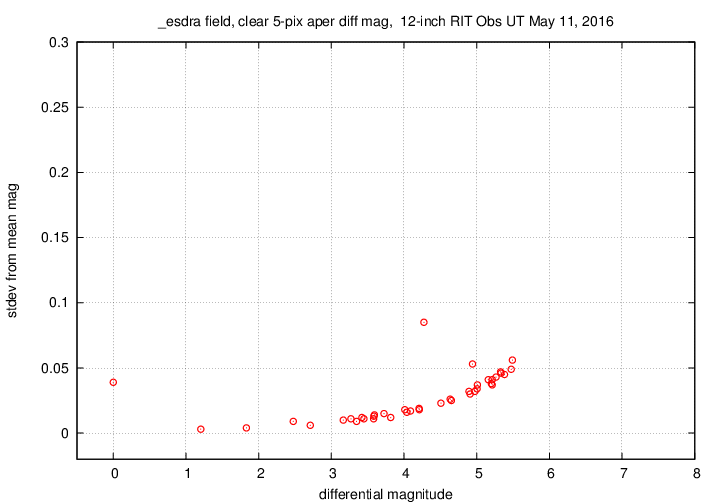
Image adjustment factor shows evidence for little cloudiness -- the night was pretty clear.
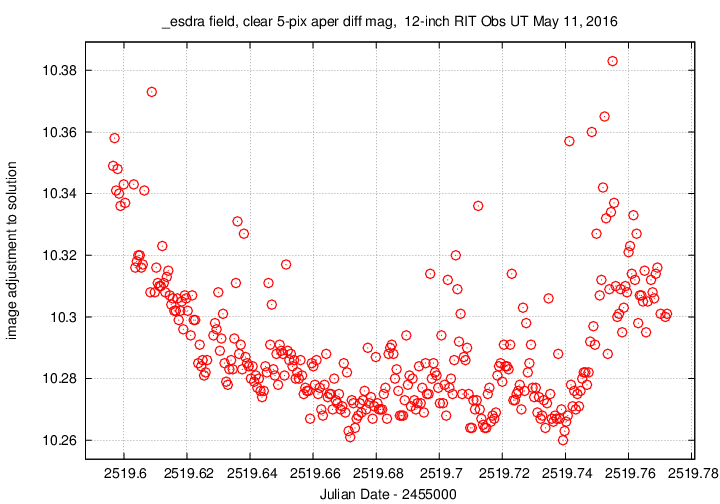
Here are light curves of the variable and the field stars:
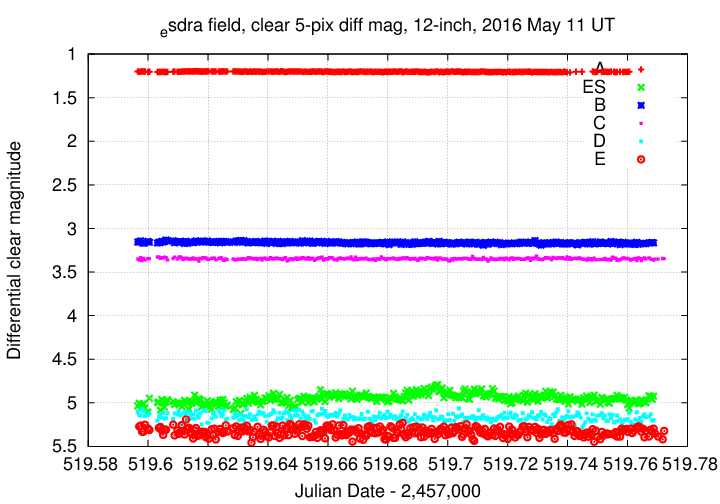
A closeup shows the variations in ES Dra more clearly.
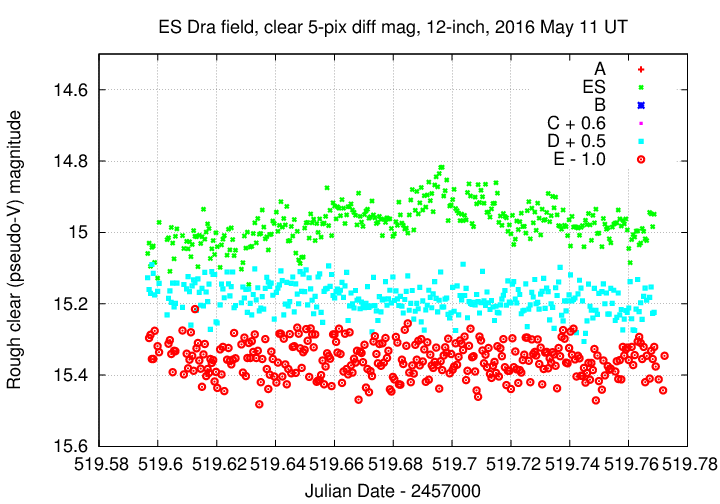
I used the UCAC value for the V-band magnitude of star "A" = UCAC4 761-044722 to shift the ensemble magnitudes to the standard V-band scale -- but remember that these are UNFILTERED measurements.
You can download my measurements below. A copy of the header of the file is shown to explain the format.
# Measurements of ES_Dra made at RIT Obs, May 11, 2016 UT, # in good conditions (but bright moonlight) # by Michael Richmond, using 12-inch Meade and ATIK 11000 CCD. # Exposures 30 seconds long, no filter. # Tabulated times are midexposure (FITS header time - half exposure length) # and accurate only to +/- 1 second (??). # 'mag' is a differential magnitude based on ensemble photometry # using a circular aperture of radius 6.6 arcseconds. # which has been shifted so UCAC4 761-044722 has mag=11.227 # which is its V-band mag according to UCAC4. # # UT_day JD HJD mag uncert May11.09656 2457519.59656 2457519.59758 15.059 0.036 May11.09704 2457519.59704 2457519.59806 15.030 0.035 May11.09751 2457519.59751 2457519.59853 15.095 0.037
Last modified 4/20/2016 by MWR.